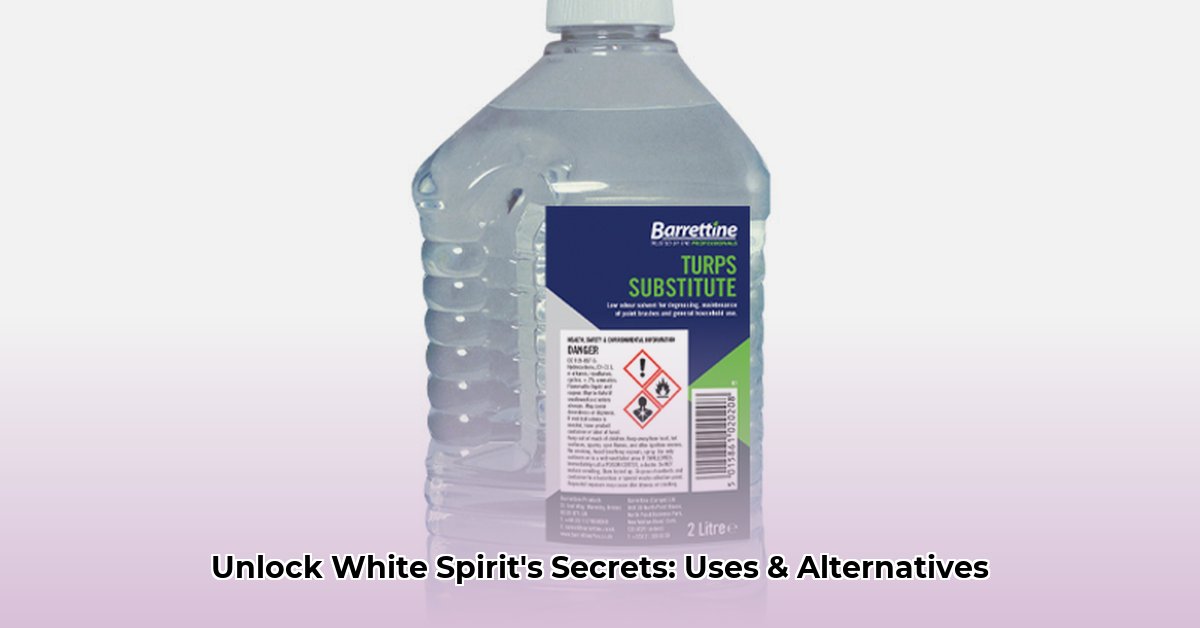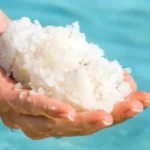Decoding White Spirit: Composition, Properties, and Types
White spirit, also known as mineral spirits, Stoddard solvent, or petroleum spirits, is a petroleum-derived solvent widely used in various industries and households. This colorless liquid, with its characteristic petroleum odor, is a complex mixture of aliphatic and alicyclic hydrocarbons, typically ranging from C7 to C12. Understanding the specific composition is crucial, as variations can influence the solvent’s strength, flammability, and potential health impacts. Different types of white spirit exist, categorized by their aromatic content and flash point, each tailored for specific applications. Type 1, with low aromatic content, is often preferred for indoor use, while Type 2 and Type 3, with higher flash points, find applications in industrial settings. Choosing the correct type for your project ensures both efficacy and safety.
White Spirit Applications: From Painting to Cleaning and Beyond
White spirit’s versatility stems from its powerful solvent properties, making it invaluable across numerous applications. In painting and decorating, it thins oil-based paints and varnishes, facilitating smooth application and effortless cleanup of brushes and equipment. Its degreasing capabilities make it ideal for cleaning machinery, tools, and automotive parts, removing stubborn grease, grime, and oil. Beyond these common uses, white spirit finds applications in woodworking, removing waxes and old finishes, and in metalworking, preparing surfaces for treatment. Furthermore, it serves as a cleaning agent for fabrics, upholstery, and even certain types of adhesive residue. Understanding the specific use case informs the necessary safety precautions and appropriate disposal methods.
Safe Handling of White Spirit: Protecting Your Health and the Environment
While indispensable for many tasks, white spirit requires careful handling due to its potential health and environmental risks. Its volatile organic compounds (VOCs) can cause respiratory irritation, dizziness, and headaches upon inhalation. Prolonged or repeated exposure can lead to more severe health issues, including skin dermatitis and neurological effects. Therefore, working in a well-ventilated area is crucial, and wearing appropriate personal protective equipment, such as gloves and respirators, is non-negotiable. Flammability is another significant concern. White spirit’s low flash point means it can ignite easily, requiring storage and handling away from open flames, sparks, and heat sources. Finally, responsible disposal is paramount. Never pour white spirit down the drain, as it can contaminate water sources. Consult local regulations for proper disposal methods, which often involve designated hazardous waste collection centers.
Exploring Eco-Conscious Alternatives: Minimizing Environmental Impact
The environmental impact of white spirit, particularly its contribution to VOC emissions and potential water contamination, necessitates considering eco-friendly alternatives. Several substitutes offer comparable cleaning and thinning capabilities while minimizing environmental harm. Citrus-based solvents, derived from natural citrus oils, are biodegradable and offer a pleasant scent. Vegetable-based solvents, often derived from soybeans or other renewable resources, provide another sustainable option. Water-based cleaners, while not always as powerful as white spirit, can effectively handle many cleaning tasks, particularly for water-based paints and less stubborn grime. For thinning oil-based paints, linseed oil or walnut oil offer natural and less harmful alternatives. Selecting an appropriate substitute depends on the specific application and desired level of cleaning power.
Choosing the Right Solvent: A Comparative Analysis
Selecting the appropriate solvent involves carefully weighing the task at hand, desired performance, and environmental considerations. The following table provides a comparative analysis of white spirit and its alternatives:
| Solvent Type | Properties | Advantages | Disadvantages | Suitable Uses |
|---|---|---|---|---|
| White Spirit | Strong solvent; flammable; petroleum-based; harsh | Effective cleaner and thinner; widely available; inexpensive | Toxic; flammable; harmful to the environment; strong odor | Paint thinning (oil-based); heavy-duty cleaning; degreasing |
| Citrus-Based Solvents | Biodegradable; pleasant citrus scent; moderate solvent strength | Environmentally friendly; less harmful to health; pleasant odor | May be less effective for heavy-duty cleaning; can damage some plastics | General cleaning; light degreasing; adhesive removal |
| Vegetable-Based Solvents | Biodegradable; low toxicity; moderate solvent strength | Environmentally friendly; less harmful to health; low odor | May be less effective for heavy-duty cleaning; can be more expensive | General cleaning; light paint thinning; some degreasing |
| Water-Based Cleaners | Non-toxic; non-flammable; mild | Safe for humans and the environment; easy to use; no strong odor | May be less effective for heavy-duty cleaning or oil-based paints; may require more applications | General cleaning; light prep work; water-based paint thinning |
| Linseed/Walnut Oil | Natural oil; low toxicity; mild solvent strength | Environmentally friendly; less harmful to health; pleasant odor | Can be slow-drying; may affect paint color slightly | Thinning oil-based paints; cleaning brushes |
Responsible White Spirit Disposal: Protecting Our Planet
Proper disposal of white spirit is crucial for environmental protection. Small quantities of clean, uncontaminated white spirit can sometimes be reused after allowing any solids to settle. However, larger quantities or contaminated white spirit require specific disposal methods in accordance with local regulations. Never dispose of white spirit down the drain or in regular household waste. Contact your local hazardous waste collection facility or municipality for guidance on appropriate disposal procedures. They can provide information on designated collection sites or special handling instructions. Some communities may also offer household hazardous waste collection events. Responsible disposal ensures that white spirit does not contaminate water sources or pose risks to human health and the environment.
White Spirit in Specialized Applications: Woodworking and Metalworking
White spirit’s powerful solvent properties make it a valuable tool in specialized applications like woodworking and metalworking. In woodworking, it effectively removes grease, wax, old finishes, and adhesive residue, preparing wood surfaces for new treatments or finishes. It also aids in cleaning brushes and other woodworking tools. Similarly, in metalworking, white spirit degreases metal parts, removing oils, lubricants, and contaminants before painting, welding, or other processes. However, in these applications, observing safety precautions is paramount. Adequate ventilation is essential to prevent the buildup of harmful vapors. Wearing protective gloves and eye protection minimizes skin and eye contact. Finally, following proper disposal procedures ensures environmental protection and worker safety.
- Unlock Filipino Culture: A Deep Dive into Traditions and Practices - April 23, 2025
- Unlock Spanish Culture: Insights & Opportunities Now - April 23, 2025
- White Spirit Uses & Substitutes: A Deep Dive for Pros & DIYers - April 23, 2025
















